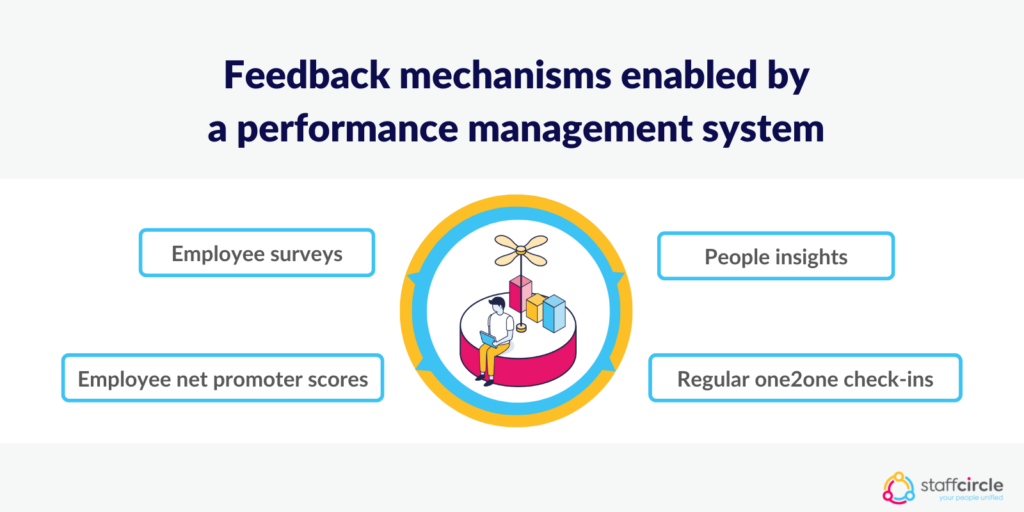It’s no secret that having great organisational culture models provides businesses everywhere with the foundation for success. If your perceived culture doesn’t match up with your actual culture, and neither aren’t where they need to be, employees are far less likely to stay happy and content at work.
In this post, we explore why a very goal-oriented culture increases employee engagement, the importance of adopting organisational culture models, and what a competing values framework really means for you and your company’s values.
Why is a Strong Company Culture So Important?
By implementing a goal-oriented culture, or a strong and well-defined organisation culture model, company leaders will be able to align employees with their organisational goals and business ethics, promoting healthy collaboration and driving exceptional performance.
Prioritising human relationships, people-first behavioural norms, and employee-oriented organisations can take your new culture to extraordinary heights, increasing your organisational effectiveness.
Read on to discover the top three corporate culture models used by the most successful businesses, how you could benefit from a culture change, and how a cultural web model can be implemented to achieve your business objectives.

What Are Corporate Culture Models?
Corporate culture models are expressions of a company’s values. This includes the beliefs and approaches to work that characterise the company and the best practices that employees adhere to.
Additional elements that help to define an organisation’s culture include the processes the work involves, how the company views innovation and principles of collaboration. Community involvement and social engagement also play a part in forming a company’s culture model.
Typically, businesses articulate their current culture model in their mission statement, which is available for all employees to read. There is a range of different corporate culture models that business leaders adopt. They are often characterised as the ‘four competing values’ framework, which was developed in 1983 by Robert Quinn and John Rohrbaugh.
The frameworks include:
- Clan: a collaborative, highly means-oriented culture
- Adhocracy: a very externally driven culture that emphasises creativity
- Hierarchy: a top-down, very professional culture that is typically more controlling
- Market: a competitive, professional culture that drives activity. Very work-oriented organisations are likely to fit into this category.
While some organisations fit more neatly into these categories than others, it’s important to recognise that culture can be fluid. As the article from the Harvard Business Review, What Is Organizational Culture? observes:
“Trying to assess organizational culture is complicated by the reality that you are trying to hit a moving target. But it also opens the possibility that culture change can be managed as a continuous process rather than through big shifts (often in response to crises). Likewise, it highlights the idea that a stable “destination” may never — indeed should never — be reached. The culture of the organization should always be learning and developing.”
In this article, we’ll break down the three most popular corporate culture models and other cultural styles. We’ll also investigate how these models can produce different outcomes to suit a variety of business objectives.
Additional Read: Improve Employee Engagement and Retention
The Top Three Organisational Culture Models
The possibilities for how companies shape their culture are vast, with a range of opportunities depending on their overall business model. There are, however, a few corporate culture models that form the basis for how many businesses operate.
Let’s take a look at the top three corporate culture models in more detail.
Corporate Culture Model: Cultural Iceberg Model
The cultural iceberg model is one that creates a clear separation between the visible and invisible elements of organisational culture. Represented as an iceberg, this model is split between the observable elements of culture and those that form a hidden structure.
Vision and mission, as well as the company’s strategy and policies, form the basis for the visible element of the iceberg model. In the invisible element, values and norms, attitudes and relationships, and other values and unwritten rules can be found.
The driving principle behind the iceberg workplace culture model is that culture is oriented by how the invisible elements are approached. It’s a people-oriented approach to culture that is centered around the employees’ needs, fostering healthy engagement.
For this model to be successful and for companies to reach their target culture, business leaders need to incorporate workplace culture feedback mechanisms into their framework. Performance management software allows them to set a range of feedback mechanisms that can be used to drive and refine cultural values.

Use the below feedback methods for a good performance management system:
- Using one on one meetings for regular check-ins
- Employee surveys to get feedback as well as provide reviews
- Employee Net Promoter Scores (eNPS): denotes if an employee will recommend their company to others
- Get an idea about the below:
- Work culture
- Employee engagement
- Peer reviews
- Reputation of the employer
- Employee experience
These feedback tools allow business leaders to continually refine those hidden elements that underpin the iceberg model. These attitudes, relationships, and approaches to collaboration can then more effectively match the requirements of the workforce. This way, the company can achieve specific internal goals.
Corporate Culture Model: The McKinsey 7S Framework
Like the cultural iceberg model, the McKinsey 7S framework for corporate culture is also split into two distinct levels. Rather than visible and invisible, this corporate culture model splits the core aspects into its hard versus soft elements.
The hard elements are:
- Structure: how work is divided among individuals, teams, and departments, and how these elements interact with one another
- Strategy: the method through which the company tackles any challenges it faces, both current and future
- Systems: the processes the company uses to get things done, both formal and informal
The soft elements include:
- Corporate culture: the company’s norms and values, also including the preferred managerial style leaders adopt
- Skills: existing skills and employee talent management that make up a company’s core base of competencies
- Staff: the employees, their understanding of processes, and their professional development
- Shared values: the notion of “how things are done around here” and are intimately linked with the company’s culture
In this model, business leaders can map out all of the elements at play and determine which areas are most in need of attention. These observations can be tied to departmental and organisational charts, giving greater insights into how these elements are influencing performance.
By approaching these elements with a change management outlook, leaders can begin to reshape the company’s culture to meet the changing demands of their given industry. They can use the McKinsey 7S framework to balance out these elements so that focus on change can be best applied.
Corporate Culture Model: Hofstede’s Model
The final model for a corporate culture that is adopted by many businesses is Hofstede’s model, which posits that culture is the product of different people each with their own identity and experience.
Hofstede’s model is simpler than the previous models we’ve discussed, picturing the culture as an onion with multiple layers at its core. These layers are:
- Values
- Rituals
- Heroes
- Symbols
Let’s learn about the different layers that make up Hofstede’s model in detail vis a vis its six aspects:
- The power balance between the different layers of the company
- Value given to collective achievements as compared to individual targets
- How workers respond to uncertainty
- Valuing results, goals, wealth, quality of life, and others
- Understanding long term and short term goals
- Indulgence and restraint: whether a worker is fulfilling their personal goals
When it comes to using these in business, they give the below benefits:
- Drives effective communication
- Helps learn about the reasons that drive a worker
- Understand the responses of the employees
- Gain clarity about the structure and culture of a company
- Improve results and productivity
- Develop ideas for growth and improvement
- Deliver better work in international settings
The socialisation aspect of this model is perhaps its strongest defining characteristic. By understanding differentiation between individuals, teams, and departments, this model is a great way to define an action plan through collaboration.
Typically adopted by new companies and start-ups, the Hofstede corporate culture model suits emerging cultures by creating an environment where all employees can contribute to the values and processes that define it. By creating this sense of trust and feedback, the Hofstede model is an effective method for building trust in the workplace by making culture a collaborative process.
The Link Between Culture and Outcomes
Clearly articulated and effective organisational culture can have a notable impact on a range of outcomes. A great culture fosters collaboration and healthy relationships, giving employees the means to think outside of the box. On an individual level, employees who feel invested in their company’s vision work harder, delivering higher levels of performance with greater engagement.
One of the foundational elements of cultures that achieve these outcomes is communication. As the article from Deloitte, Catalyzing Organizational Culture Change, points out:
“Through every stage of the cultural change and reinforcement process, it is important to communicate beliefs and expected behaviors. And it is okay to explicitly articulate and reinforce the desirable beliefs. Some companies are publishing cultural manifestos.”
This ongoing process of communication helps to perform a variety of functions, including:
- Reinforcing the beliefs, behaviours, and expected outcomes employees are expected to model
- Framing – and reframing – narratives that express the company’s journey over time
- Articulating the kind of relationships that help the culture thrive
- Setting the stage for future change and the metrics by which success is measured
Distinct Cultural Styles
While many companies work within the frameworks outlined above, the most successful companies have their own distinct cultural styles. They take these popular corporate culture models and add their own twist, creating unique working environments that deliver optimal outcomes.
Here are a couple of examples of international corporations which have succeeded thanks to their distinct approach to organisational culture.
SquareSpace
The culture at SquareSpace is described as “flat, open, and creative”, eschewing hierarchical management in favour of little distinction between management and employees. This structure is often adopted by start-ups that seek to encourage collective brainstorming on a daily basis.
In addition to down-to-earth leaders who are embedded within the workforce, SquareSpace also fosters engagement with a range of perks and benefits. Coverage of health insurance premiums and flexible holidays are offered, as well as office spaces and amenities that are designed to enhance the employee experience with well-being.
Zappos
This popular shoe retailer established its culture early on, with the recruitment and onboarding process designed to assess cultural fit. This approach means all employees are intimately aware of the organisation’s culture from the beginning, helping to reduce the company’s turnover rates.
From the interview onwards, the company’s ten core values are taught, with skills tests, team-building exercises, and culture promotion all included in the onboarding process. This approach works best for well-established businesses that have refined and clarified their key values over time.
Summary
The framework of corporate culture business leaders choose to adopt depends on a range of factors, from how established the company is to the products and services they deliver. This guide will help you to choose the best organisational culture model to suit your business goals, fostering a workforce capable of aligning and engaging with this core vision.
FREQUENTLY ASKED QUESTIONS
What Are the 4 Models of Organisational Culture?
Below are the 4 most used models for organisational culture:
- Competing Values Framework
- McKinsey’s 7S Framework
- Edgar Schein’s Model
- Hofstede’s Model
What Are the 4 Major Elements of Organisational Culture?
The elements are not quite limited to just four. The major elements are:
- Values
- Purpose
- Leadership
- Effective communication
- Professional development
- Wellbeing
- A sense of belonging
What Are the 6 Dimensions of Organisational Culture?
As per Hofstede, the 6 dimensions are:
- Whether process or result oriented
- Job oriented vs employee oriented
- Loose vs tight control
- Professional vs parochial
- Whether a system is open or closed
- Pragmatic vs normative approach
What Do the 4 Main Types of Organisational Culture Include?
A company can follow any of the four or a hybrid of them:
- Hierarchy culture
- Adhocracy culture
- Clan culture
- Market culture
How Does Work Culture Influence Results?
With a positive work culture, you can gain the following:
- Employee retention
- Drive innovative ideas
- Have an inclusive culture
- Promote collabs
- Have better employee health





